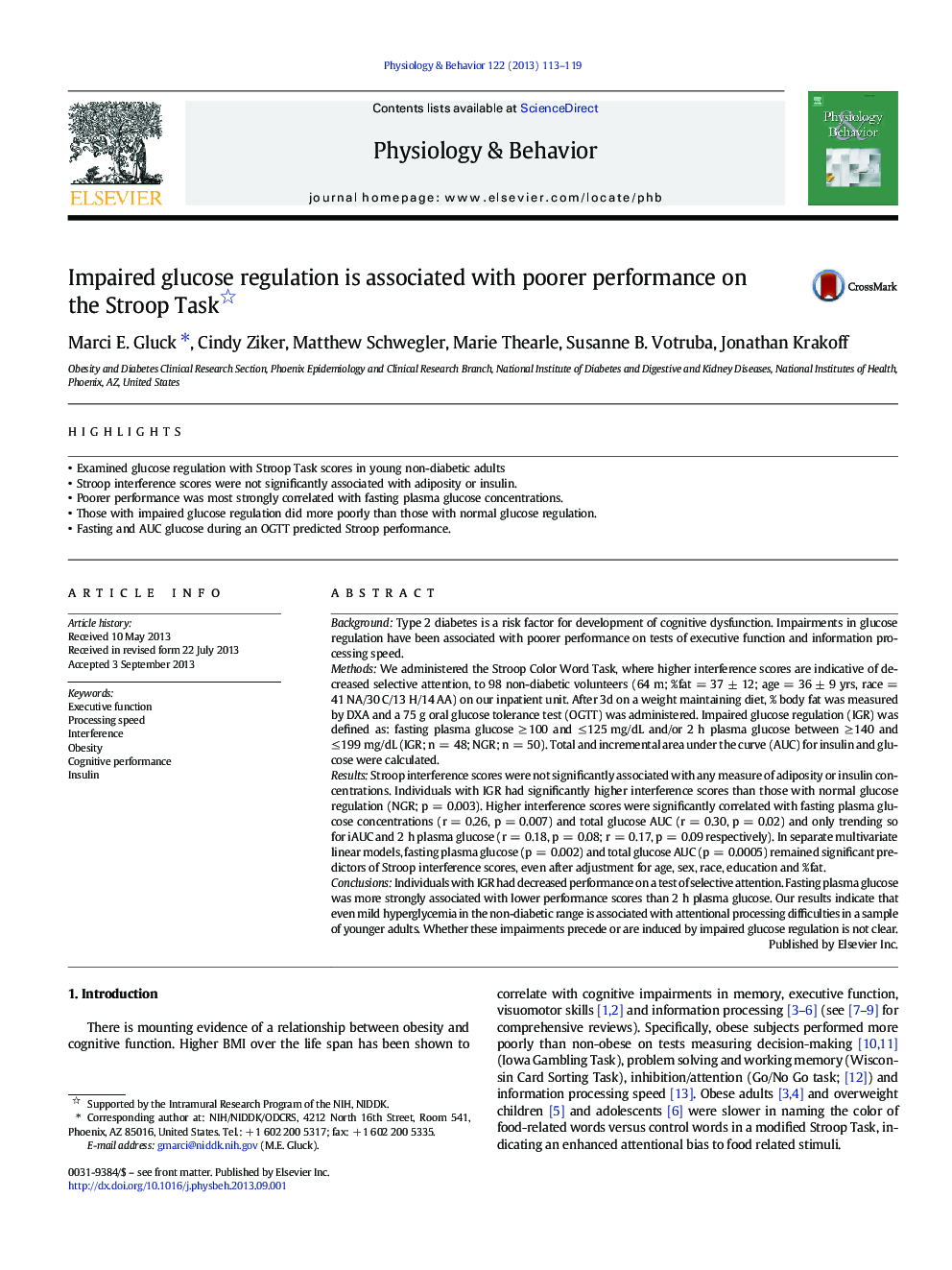| کد مقاله | کد نشریه | سال انتشار | مقاله انگلیسی | نسخه تمام متن |
|---|---|---|---|---|
| 5924357 | 1571195 | 2013 | 7 صفحه PDF | دانلود رایگان |

- Examined glucose regulation with Stroop Task scores in young non-diabetic adults
- Stroop interference scores were not significantly associated with adiposity or insulin.
- Poorer performance was most strongly correlated with fasting plasma glucose concentrations.
- Those with impaired glucose regulation did more poorly than those with normal glucose regulation.
- Fasting and AUC glucose during an OGTT predicted Stroop performance.
BackgroundType 2 diabetes is a risk factor for development of cognitive dysfunction. Impairments in glucose regulation have been associated with poorer performance on tests of executive function and information processing speed.MethodsWe administered the Stroop Color Word Task, where higher interference scores are indicative of decreased selective attention, to 98 non-diabetic volunteers (64 m; %fat = 37 ± 12; age = 36 ± 9 yrs, race = 41 NA/30 C/13 H/14 AA) on our inpatient unit. After 3d on a weight maintaining diet, % body fat was measured by DXA and a 75 g oral glucose tolerance test (OGTT) was administered. Impaired glucose regulation (IGR) was defined as: fasting plasma glucose â¥Â 100 and â¤Â 125 mg/dL and/or 2 h plasma glucose between â¥Â 140 and â¤Â 199 mg/dL (IGR; n = 48; NGR; n = 50). Total and incremental area under the curve (AUC) for insulin and glucose were calculated.ResultsStroop interference scores were not significantly associated with any measure of adiposity or insulin concentrations. Individuals with IGR had significantly higher interference scores than those with normal glucose regulation (NGR; p = 0.003). Higher interference scores were significantly correlated with fasting plasma glucose concentrations (r = 0.26, p = 0.007) and total glucose AUC (r = 0.30, p = 0.02) and only trending so for iAUC and 2 h plasma glucose (r = 0.18, p = 0.08; r = 0.17, p = 0.09 respectively). In separate multivariate linear models, fasting plasma glucose (p = 0.002) and total glucose AUC (p = 0.0005) remained significant predictors of Stroop interference scores, even after adjustment for age, sex, race, education and %fat.ConclusionsIndividuals with IGR had decreased performance on a test of selective attention. Fasting plasma glucose was more strongly associated with lower performance scores than 2 h plasma glucose. Our results indicate that even mild hyperglycemia in the non-diabetic range is associated with attentional processing difficulties in a sample of younger adults. Whether these impairments precede or are induced by impaired glucose regulation is not clear.
Journal: Physiology & Behavior - Volume 122, 2 October 2013, Pages 113-119